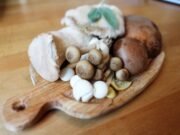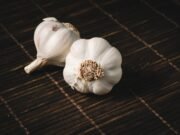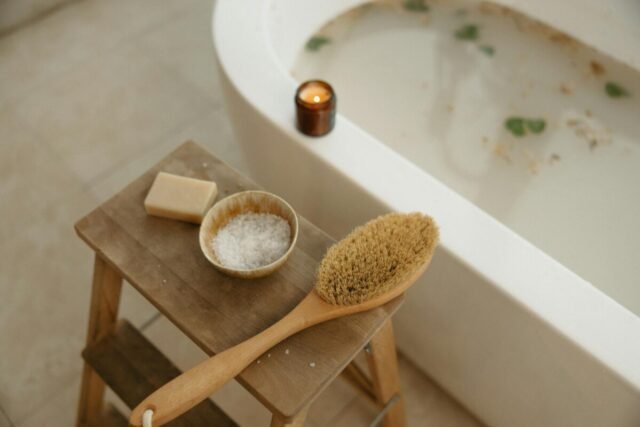Making your own soap at home is a rewarding and fun hobby that offers numerous benefits. When you create DIY soap, you have complete control over the ingredients, allowing you to use natural, high-quality components that are gentle on your skin. Homemade soap also allows for endless customization options, from scents and colors to the addition of beneficial ingredients like herbs and essential oils. Plus, making your own soap can be more cost-effective than purchasing artisanal soaps from the store. In this ultimate guide, we'll explore the different methods of soap making, including melt-and-pour, cold process, and hot process, to help you get started on your DIY soap journey.
Essential Tools and Supplies
Before diving into the world of soap making, it's essential to gather the necessary tools and supplies. Here's a list of the basic equipment you'll need:
- Digital scale (for accurately measuring ingredients)
- Heat-safe containers (for melting and mixing)
- Silicone or plastic molds (for shaping your soap)
- Immersion blender (for mixing soap batter)
- Thermometer (for monitoring temperatures)
- Protective gear (gloves, goggles, and long sleeves)
When it comes to sourcing soap-making ingredients, you have several options. Many craft stores and online retailers offer a wide range of soap bases, fragrances, colors, and additives. Some popular online suppliers include:
- Bramble Berry
- Wholesale Supplies Plus
- Bulk Apothecary
- Nature's Garden
Remember, when working with lye (sodium hydroxide) for cold process soap making, always prioritize safety. Wear protective gloves, goggles, and long sleeves, and work in a well-ventilated area.
Choosing Your Soap Base (Melt-and-Pour)
Melt-and-pour soap making is an excellent choice for beginners, as it requires minimal equipment and eliminates the need to handle lye. With melt-and-pour, you simply melt a pre-made soap base, add your desired fragrance, color, and additives, and pour it into molds to set.
There are several types of melt-and-pour soap bases available, each with unique properties:
| Soap Base | Properties |
|---|---|
| Goat's Milk | Creamy, moisturizing, gentle on sensitive skin |
| Shea Butter | Ultra-moisturizing, rich in vitamins and minerals |
| Clear Glycerin | Transparent, versatile, easy to color and customize |
| Honey | Naturally moisturizing, antibacterial properties |
| Olive Oil | Gentle, nourishing, high in antioxidants |
You can find melt-and-pour soap bases at craft stores, online retailers, and even some health food stores.
Step-by-Step Melt-and-Pour Soap Making
Now that you've chosen your soap base, it's time to get started! Follow these simple steps to create your own melt-and-pour soap:
- Cut the soap base into small cubes and place them in a heat-safe container.
- Melt the soap base using a double boiler or microwave, stirring occasionally until fully melted.
- Add your desired fragrance oil or essential oil and stir gently to combine.
- If desired, add color using soap-safe dyes or natural colorants like micas or clays.
- Pour the melted soap into molds and allow it to cool and harden completely (usually 4-6 hours).
- Remove the soap from the molds and enjoy!
To customize your DIY soap further, consider adding dried herbs, exfoliants like coffee grounds or oatmeal, or even embedding small toys or figurines for a fun twist.
Cold Process Soap Making (For the Adventurous)
For those ready to take their soap making to the next level, cold process soap making offers even more customization options. However, this method involves working with lye (sodium hydroxide), which requires extra safety precautions and a bit more preparation.
In cold process soap making, you create your own soap base by combining oils and lye solution, which then undergoes a chemical reaction called saponification. This process results in a harder, longer-lasting bar of soap that can be customized with an endless array of ingredients.
If you're interested in exploring cold process soap making, we recommend starting with a beginner-friendly recipe and thoroughly researching the process before diving in. Some excellent resources for learning cold process soap making include:
- Soap Queen (https://www.soapqueen.com/)
- The Spruce Crafts (https://www.thesprucecrafts.com/cold-process-soap-making-4781806)
- Lovin Soap Studio (https://www.lovinsoap.com/)
Curing and Using Your Homemade Soap
After making your soap, whether through the melt-and-pour or cold process method, it's essential to allow it to cure properly. Curing is the process of allowing excess water to evaporate from the soap, resulting in a harder, longer-lasting bar.
For melt-and-pour soaps, the curing process is relatively short, usually just a few days to a week. Cold process soaps, on the other hand, require a longer curing time, typically 4-6 weeks.
To cure your soap, place the bars on a drying rack or lined baking sheet in a cool, dry place with good air circulation. Avoid direct sunlight, as this can cause the colors to fade.
Once your soap has cured, it's ready to use! Store your homemade soap in a cool, dry place away from direct moisture to prolong its shelf life.
Creative DIY Soap Ideas
One of the joys of making your own soap is the endless possibilities for creativity and customization. Here are a few inspiring ideas to get your creative juices flowing:
- Exfoliating Soaps: Add natural exfoliants like coffee grounds, oatmeal, or crushed walnut shells to your soap base for a gentle, skin-polishing effect.
- Layered Soaps: Create stunning visual effects by layering different colors of soap in the mold, allowing each layer to harden slightly before adding the next.
- Shaped Soaps: Use silicone molds in fun shapes like flowers, stars, or even cute animals to create whimsical, gift-worthy soaps.
- Herb-Infused Soaps: Incorporate dried herbs like lavender, chamomile, or peppermint into your soap for a natural, aromatic experience.
- Swirled Soaps: Use a skewer or chopstick to create beautiful swirls and patterns in your soap by gently dragging it through the top of the poured soap.
Remember, the key to creating unique and beautiful homemade soaps is experimentation! Don't be afraid to try new techniques, scent combinations, and additives to discover your perfect DIY soap recipe.
Making your own soap at home is a fun, creative, and rewarding hobby that allows you to craft personalized, natural products for yourself and your loved ones. By following this ultimate guide, you'll be well on your way to mastering the art of DIY soap making.
Whether you choose the simple melt-and-pour method or dive into the more advanced cold process technique, remember to prioritize safety, have fun, and let your creativity shine. Happy soap making!































